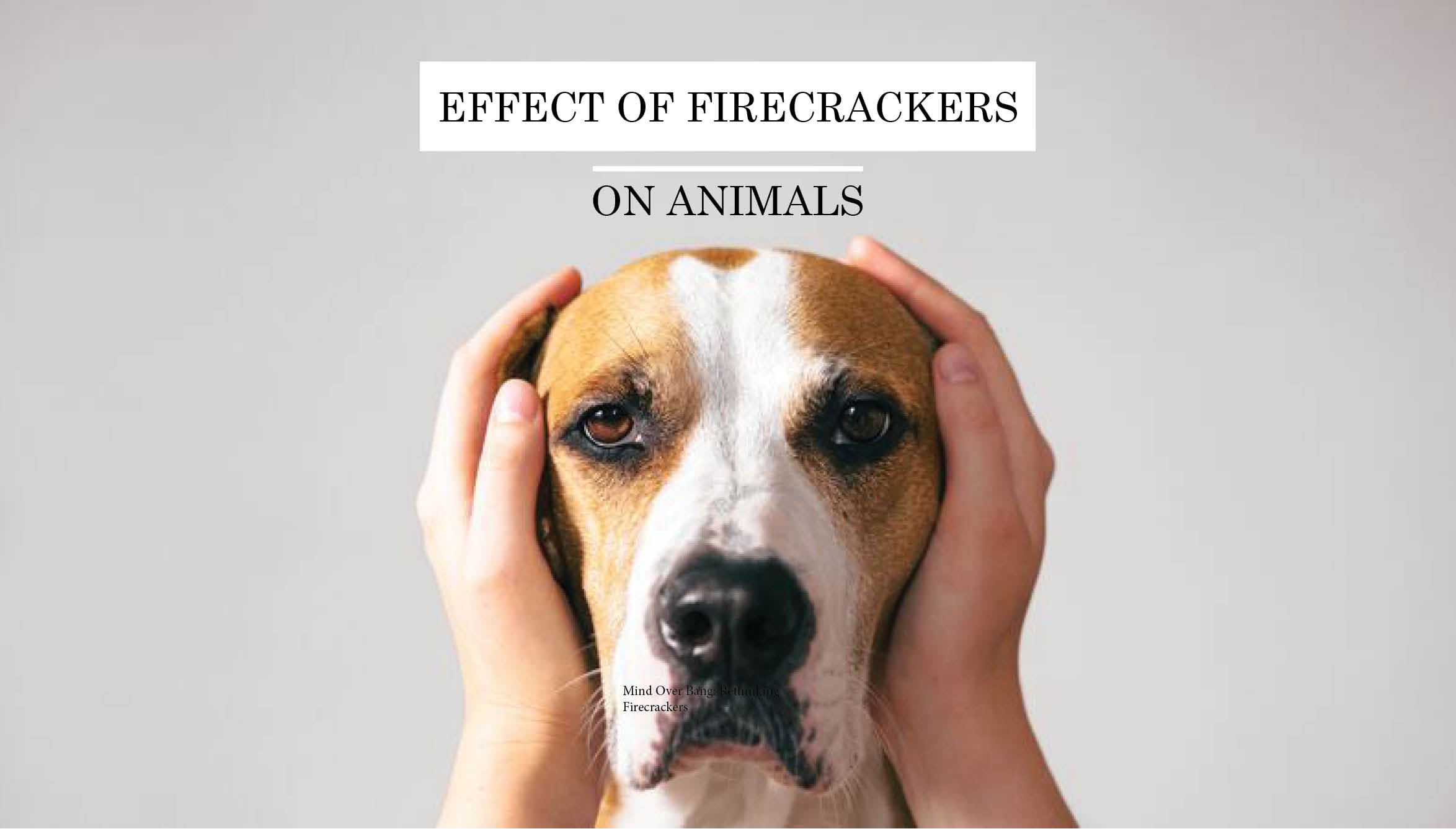
How Firecrackers Affect Animals’ Health and Safety
Firecrackers have become an integral part of festivals, lighting up the sky with their brilliant flashes and resounding booms. However, this joyful spectacle often hides a darker truth: the devastating impact these celebrations have on animals, particularly pets and strays. While we immerse ourselves in the excitement, the explosive noise and toxic fumes of firecrackers cause immense suffering to the animals around us. It is crucial that we become aware of these effects and explore ways to celebrate without causing harm.
Crackers are notorious for creating extreme levels of noise pollution. The loud explosions, often exceeding permissible limits, far beyond what animals can tolerate. Pets such as dogs and cats, with their heightened sensitivity to sound, are particularly vulnerable. Their acute hearing makes the unexpected bursts of noise during Diwali terrifying. Dogs are known to hide, tremble uncontrollably, or bark excessively in response to firecrackers, sometimes even injuring themselves in panic. It’s not uncommon for pets to develop long-term anxiety disorders due to repeated exposure to loud, unpredictable noises during festive seasons. Street dogs and cats suffer even more. During festivals like Diwali, many stray animals vanish from their familiar territories. Disoriented and frightened by the deafening noise, they run aimlessly, often crossing busy streets, leading to accidents and sometimes fatalities. Many never return, lost or killed due to the chaos. The disappearance of strays during festive periods is a common and heartbreaking reality, with some animals becoming permanently displaced or worse, succumbing to the dangers of their frantic escape.
Birds, too, are profoundly affected by firecrackers. The loud sounds disrupt their flight patterns, causing disorientation and leading to mid-air collisions with trees, buildings, or electric wires. Birds have been known to abandon their nests out of fear, leaving their eggs or chicks behind. This disruption in their life cycle can have long-lasting consequences on bird populations, especially in urban areas where their habitat is already threatened.
Our pets, for instance, can develop deep-seated fears and phobias associated with the loud noises of firecrackers due to the proximity in urban areas. The sudden and intense sounds can trigger panic attacks in dogs and cats, manifesting as uncontrollable shaking, excessive drooling, or attempts to escape their surroundings. Repeated exposure can lead to long-term behavioural changes, with some pets becoming fearful of any loud sound, such as thunderstorms or even daily urban noises. For wildlife, the stress is just as severe. Animals that rely on their keen senses to navigate their environment, such as bats and owls, are particularly vulnerable. Firecrackers disturb their nocturnal routines, making it difficult for them to hunt, forage, or seek shelter.
The noise is only one part of the problem. Firecrackers release toxic chemicals into the air. These pollutants linger in the atmosphere long after the last firecracker has burst, creating a harmful environment for both humans and animals. For animals, who have no shelter from the smoke and fumes, the air becomes a dangerous mix of irritants. Birds, with their fragile respiratory systems, are especially at risk.
One of the most tragic consequences of firecrackers is the physical harm they cause to animals. Stray animals, driven by curiosity or fear, often come into contact with lit or leftover firecrackers. There are countless instances of dogs and cats sustaining burns, losing limbs, or even dying after mishandling firecracker debris. In densely populated areas, the chance of animals being caught in the blasts is much higher, resulting in severe injuries. Some animals, particularly street dogs, are deliberately targeted by individuals who set off firecrackers near them, causing unimaginable suffering.
The joy of festivals does not have to come at the expense of animals. Increasingly, people are becoming aware of the damage caused by firecrackers and are looking for alternatives that allow for celebration without cruelty. For pet owners, taking precautions during the festive season is crucial. Keeping pets indoors, playing calming music, and creating a safe space for them to retreat to can help reduce their stress. It is also advisable to avoid taking pets out during peak firecracker hours. For stray animals, individuals can help by setting up temporary shelters or simply refraining from setting off firecrackers in areas with a high population of strays.
While festivals are a time for joy and celebration, we must also recognize the impact our festivities have on the animals around us. Firecrackers, while a traditional part of celebrations cause fear, injury, and even death to countless pets and wildlife every year. By choosing more responsible and compassionate ways to celebrate, we can ensure that our festivals remain joyous for everyone, including the animals that share our world equally. Awareness and action go hand in hand. This festive season, let’s spread the message of kindness and care for our four-legged friends, making our celebrations a little quieter and a lot more compassionate.
A Dog’s Diwali By Chitrangada – https://niyogibooksindia.com/books/a-dogs-diwali/


